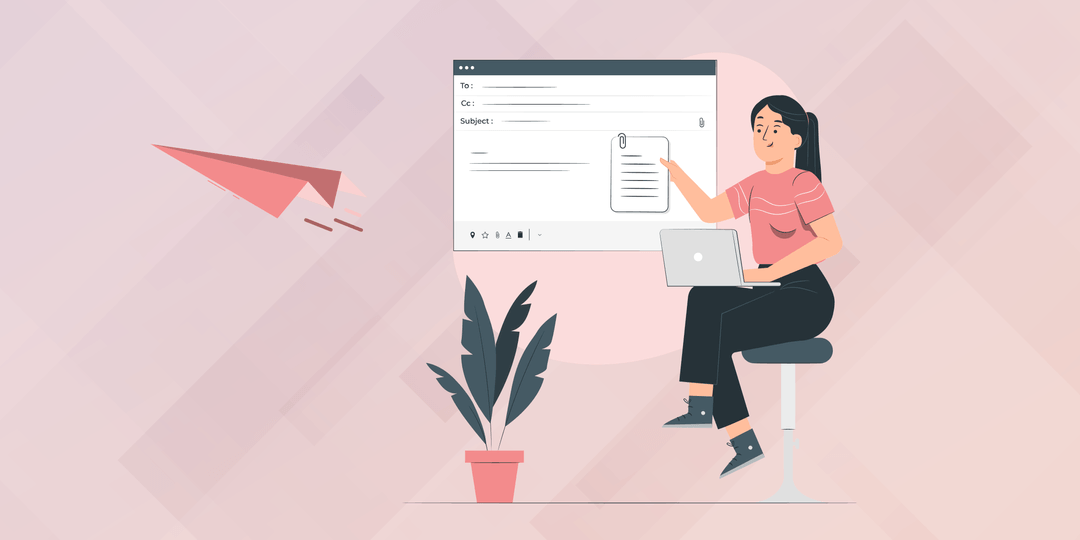10 Effective Work Email Examples to Enhance Professional Communication
10 Effective Work Email Examples to Enhance Professional Communication
Jamie Mackenzie
7 min read · Oct 31, 2024

Understanding Work Email Examples in Professional Communication
In today’s digital age, work emails are a cornerstone of professional communication. They provide a formal platform for exchanging ideas, sharing updates, and fostering collaboration among colleagues and stakeholders. Effective work email examples serve as valuable templates, guiding you in crafting emails that are not only clear and concise but also professional and respectful.
According to a study by the Radicati Group, approximately 281 billion emails are sent and received daily. This staggering number underscores the necessity of standing out through well-structured emails. By examining work email examples, professionals can learn how to communicate their thoughts effectively, ensuring that their messages are not only read but understood.
Key Elements of an Effective Work Email
To enhance clarity and professionalism, several key components should be included in every work email:
-
Subject Line: A clear and specific subject line informs the recipient about the email's content, such as Submission of Research Paper: [Title].
-
Salutation: Addressing the recipient appropriately sets a respectful tone (e.g., Dear Dr. Smith).
-
Body: Begin with a concise introduction, followed by the main message and a conclusion. Using bullet points can enhance readability.
-
Closing Statement: A polite sign-off, such as “Best regards” or “Sincerely,” reinforces professionalism.
-
Signature: Include your name, position, and contact information to maintain a formal touch.
By incorporating these elements into work email examples, professionals can illustrate the importance of clarity and courtesy in their communications.
Crafting Work Email Examples for APA Style Research Papers
Work Email Examples for APA Style Research Paper Submissions
When submitting a research paper formatted in APA style, it is crucial to follow a specific structure to maintain academic integrity and professionalism. Here’s an example of an effective work email for submission:
Subject: Submission of APA Style Research Paper
Dear [Recipient's Name],
I hope this message finds you well. I am writing to submit my research paper titled “The Effects of Sleep on Cognitive Functioning,” formatted according to APA style guidelines.
Please find the attached document for your review. I appreciate your time and look forward to your feedback.
Thank you.
Best regards,
[Your Name]
[Your Title]
[Your Institution]
[Your Contact Information]
Components of a Professional Email for Research Paper Submission
When submitting a research paper, ensure the following components are present:
- Clear Subject Line: Indicate that the email is regarding a paper submission.
- Formal Greeting: Use the recipient's title and last name.
- Brief Introduction: Clearly state the purpose of your email.
- Attachment Notice: Mention that the research paper is attached.
- Polite Closing: Thank the recipient for their time and consideration.
Work Email Examples for Research Papers in Psychology
Writing Work Emails for Research Papers in Psychology
Crafting emails related to psychology research papers requires attention to detail and clarity. Here’s a simple structure to follow:
Subject: Submission of Psychology Research Paper
Dear Dr. [Recipient's Last Name],
I hope you are doing well. I am submitting my research paper on “The Impact of Cognitive Behavioral Therapy on Anxiety Disorders.” The document follows the APA style format, and I have included relevant data representations.
I look forward to your valuable feedback.
Sincerely,
[Your Name]
[Your Title]
[Your Institution]
[Your Contact Information]
Utilizing Data Representation in Work Emails for Research Papers
In psychology research, incorporating visual data representations, such as pie charts, can enhance understanding and engagement. A brief mention in the email about any attached charts or diagrams can help the recipient grasp the data’s significance quickly. For example, stating, “The paper includes a pie chart illustrating the participant demographics,” provides context that can lead to more productive feedback.
Best Practices for Work Email Examples in Academic Settings
Work Email Examples for Submitting Research Papers
When submitting any research paper, adhere to these best practices:
- Use a Professional Tone: Maintain formality throughout the email.
- Be Concise: Get to the point quickly, respecting the recipient's time.
- Proofread: Ensure there are no grammatical or spelling errors.
Common Mistakes to Avoid in Work Emails for Research Papers
Some common errors that can undermine professionalism include:
- Ambiguous Subject Lines: Avoid vague terms; be specific about the email’s content.
- Lack of Structure: A poorly organized email can confuse the recipient.
- Ignoring Attachments: Always mention if a document is attached.
In summary, employing well-structured work email examples is essential for achieving effective communication in professional and academic settings. By adhering to best practices, you can present your ideas clearly and maintain a high standard of professionalism.
